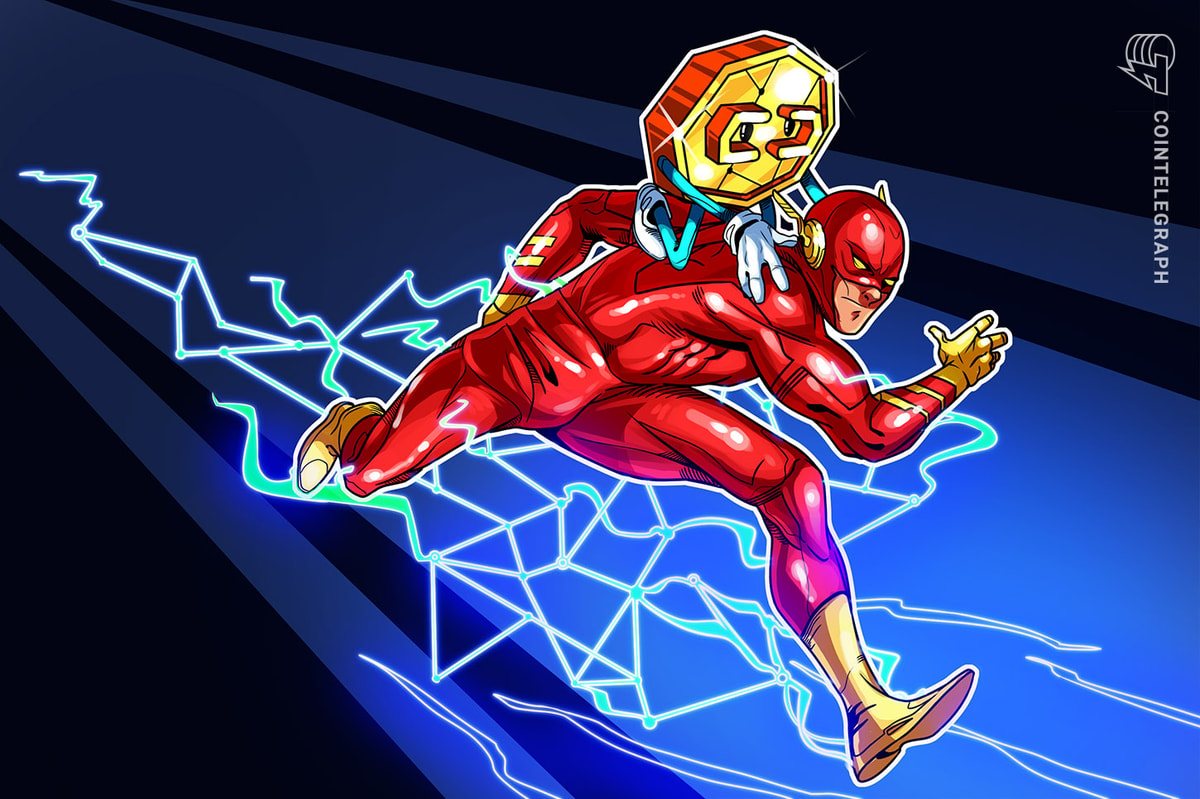

In Brief
Cecilia Hsueh, CEO of Morph, discusses decentralized sequencers, responsive validity-proof technology, modular architecture, consumer blockchain applications, and Morph’s strategy for mass adoption and regulatory challenges.
Hack Seasons Brussels is almost here, and we want to share stories about its amazing speakers. This time, we’ll talk with Cecilia Hsueh, co-founder and CEO of Morph. Cecilia will discuss the importance of decentralized sequencers for blockchain security, the role of responsive validity-proof technology in improving layer two state verification, and the benefits of Morph’s modular architecture. She also emphasizes the need for consumer blockchain applications and outlines Morph’s strategy for achieving mass adoption and addressing regulatory challenges.
Elaborate on your journey to Web3. How did you start? What was your first project?
I entered the space in 2019. At that time, I was an investor and a co-founder of a centralized exchange called Phemex. So, basically, I ran that exchange for three years and managed everything for it.
An interesting memory at that time was that I really felt the power of crypto. Because for us, it was really, really fast starting. We just launched our platform three months ago, and you will see super-fast growth after three months. So it’s like every month, it’s like double the revenue and profits afterward.
Do you still think that the industry is evolving at a crazy speed?
I still think so because, in 2019, we saw fewer retail users in this area. However, since we were running a direct exchange, the trading volume was really crazy, but the user volume was not that high. If you compare it to today, when there are more regulations for centralized exchanges, and people have more trust in exchanges, so many more normal retail users who are not crypto-native people enter the space. So, yeah, you can still see the crazy trend, but I think it’s a different trend right now.
Can you explain how decentralized sequencers work and why they are important for security and resilience?
We had this idea a long time ago. Our tech team, they were all from other blockchains, like part of our core tech team were from the Cosmos core tech team. So they always had this idea of decentralized sequencer because the concept of blockchain and EVM layer 2s is decentralization. This is one of the basic and most important concepts we have for layer 2s. However, most of the layer 2s still use centralized sequencers, which is actually in the opposite direction of decentralization.
The biggest benefit for decentralized sequencers is definitely to solve the problem of single point of failure. There were some cases recently where the single sequencer caused the whole chain to shut down, which no one wants to see.
The decentralized sequencer can solve this problem – when one sequencer doesn’t work, the others can take over. It also solves the problem of MEV and unfairness, as you never know who is manipulating the trading orders with a single sequencer.
We are the first ones to put the decentralized sequencer live on our testnet. Right now, we have seven sequencers and will increase it to around 12.
How does responsive validity-proof technology improve layer two state verification?
It’s almost a hybrid rollup of OP and ZK rollups. We choose to be a hybrid middle point not because we don’t believe in both technologies – eventually we are going to evolve into pure ZK rollups. But right now we don’t think the whole ZK rollup tech is mature enough and the fees are pretty high.
Our infrastructure is designed to evolve into pure ZK rollups easily in the future once the technology matures and costs come down. Right now, people still need to do fraud proofs in the OP rollup, but once challenged, they just use a ZK proof. This shortens the challenge window from 7 days to 1 day or less and decreases transaction fees since you don’t need to transfer every transaction, only when challenged. So, it’s much cheaper than a pure ZK rollup.
What advantages does Morph’s modular architecture provide end-users and developers with?
Modularity is definitely the trend. Morph uses a modular architecture as well. The benefit for developers is to make them much more flexible and safer to change their architecture anytime.
On Morph’s layer 2, we are still using Ethereum’s data availability layer because we think decentralization and safety are most important. Ethereum currently offers the safest data availability layer.
However, we see requests from projects caring more about low costs for their end users. That’s why we have a layer 3 on our roadmap for Q4, using an external data availability layer to decrease costs. Layer 3 is designed for projects caring about low costs, while layer 2 offers the highest security for safety-focused projects.
You mentioned you’re not really using ZK-Rollups but OP-Rollups. Are there other ways you’re decreasing gas fees and improving scalability for end users and developers?
After EIP-4844, the costs have already decreased by 80-90%, so the costs are now much more reasonable. For TPS, I don’t think it’s the most important thing for us. A lot of chains are chasing higher TPS, but no one really needs that high of TPS. For example, 1,000 TPS – who cares? 95% of applications can work with 200 TPS, which we aim for.
The key is not chasing super high speeds but rather focusing on what applications will use your chain and what they need – speed, lower costs, etc. You build the ecosystem first, then optimize the technology for their needs, not just build raw tech no one uses.
Have you faced any problems or challenges while working on the ecosystem side and regulatory challenges?
Yes, definitely on the ecosystem side since Morph is focusing on building a consumer blockchain – the first to raise this concept. The challenge is that if you go to the market, 90% of builders are in DeFi, GameFi, NFTs, meme coins, and now AI projects. Not many are in consumer applications. The reason is that the crypto market is still small, and the community is very crypto-native. To them, it’s easy to understand DeFi and the easiest way to earn profits.
The second reason is the education cost for normal retail consumer application users is higher than other crypto areas, as you need to educate them on what Web3 is and the benefits over Web2. So the challenges are not finding many consumer app builders, and needing time to educate end users. We don’t see major technical challenges yet as our team is very experienced.
Can you please share more of your long-term goals and how you envision the evolution of Morph?
Our long-term goal is really to help foster the mass adoption of blockchain into normal people’s daily real lives so that we can create true mass adoption of blockchain. Right now, the only so-called mass adoption is still crypto because people see the investment value, but they haven’t seen the real value in their daily lives. Many of my friends ask why we need crypto and decentralization – most still don’t understand the purpose and meaning.
It’s the same in the layer 2 industry – we talk about scalability all the time, but why do we need scalability when no one is using it? If we still focus only on this small crypto crowd, we’ll never need more than 200 TPS for most applications because there’s no usage.
This is why we started this project. We see this problem in layer 2s. People talk about technology all the time but don’t have an ecosystem or users.
What Morph is strong at is we already have a very strong, 30 million user base from our ecosystem. These users already have the basic concept of crypto as registered wallet and exchange users. But they are looking for applications besides just DeFi, GameFi and digital apps – they can’t find consumer apps on the market now.
On the other hand, all these developers deploy on some chain but can never find go-to-market support or end users. At events, they can only talk to industry people, not their target retail users, because they don’t know where to find them.
What Morph is good at is funneling these users to builders. Morph acts as a bridge, leveraging layer 2 technology to build these two groups together – retail users looking for good on-chain apps on one side, and builders looking for users on the other side. Morph builds the whole ecosystem in the middle, using layer two as the platform.
You will be a speaker at the upcoming Hack Seasons Brussels. What are your plans and goals for this event?
For us, events are always for exposure – we want to bring brand reputation and exposure to different markets. We’ve done a lot of events in North America and Asia, and now going to Brussels to talk to the whole European market.
I think Brussels is a very good location because most chains are very US-centric, but Morph is not. We got money from top US VCs like Dragonfly and Pantera because they believe we can open markets outside the US. Most leading chains are US-centric but don’t know how to go outside the US.
However, Morph is focusing on markets like East Asia, Southeast Asia, and Europe. We have those 30 million users I mentioned, with a big part of those markets. There are many good builders in European markets, but no really leading chains care about this builder community.
So it’s a good opportunity to go to Brussels, talk to these builders, and tell them Morph is here to help build their apps. We can also help them grow and get users from East Asia, Southeast Asia, and Europe – we have a huge user base in German-speaking areas.
On one side, no apps focus on these markets. On the other side, US builders really need traction to grow their ecosystem. So this is what we want to bring to Brussels.
Disclaimer
In line with the Trust Project guidelines, please note that the information provided on this page is not intended to be and should not be interpreted as legal, tax, investment, financial, or any other form of advice. It is important to only invest what you can afford to lose and to seek independent financial advice if you have any doubts. For further information, we suggest referring to the terms and conditions as well as the help and support pages provided by the issuer or advertiser. MetaversePost is committed to accurate, unbiased reporting, but market conditions are subject to change without notice.
About The Author
Viktoriia is a writer on a variety of technology topics including Web3.0, AI and cryptocurrencies. Her extensive experience allows her to write insightful articles for the wider audience.

Viktoriia is a writer on a variety of technology topics including Web3.0, AI and cryptocurrencies. Her extensive experience allows her to write insightful articles for the wider audience.
Read More: mpost.io










 Bitcoin
Bitcoin  Ethereum
Ethereum  Tether
Tether  XRP
XRP  Solana
Solana  USDC
USDC  TRON
TRON  Dogecoin
Dogecoin  Cardano
Cardano  Lido Staked Ether
Lido Staked Ether  Wrapped Bitcoin
Wrapped Bitcoin  LEO Token
LEO Token  Avalanche
Avalanche  Chainlink
Chainlink  Stellar
Stellar  USDS
USDS  Toncoin
Toncoin  Shiba Inu
Shiba Inu  Wrapped stETH
Wrapped stETH  Sui
Sui  Hedera
Hedera  Bitcoin Cash
Bitcoin Cash  Litecoin
Litecoin  Polkadot
Polkadot  Bitget Token
Bitget Token  Binance Bridged USDT (BNB Smart Chain)
Binance Bridged USDT (BNB Smart Chain)  Hyperliquid
Hyperliquid  Ethena USDe
Ethena USDe  WETH
WETH  Pi Network
Pi Network  Monero
Monero  WhiteBIT Coin
WhiteBIT Coin  Wrapped eETH
Wrapped eETH  Coinbase Wrapped BTC
Coinbase Wrapped BTC  Dai
Dai  OKB
OKB  Uniswap
Uniswap  Pepe
Pepe  Aptos
Aptos  Gate
Gate  Tokenize Xchange
Tokenize Xchange  Ondo
Ondo  sUSDS
sUSDS  BlackRock USD Institutional Digital Liquidity Fund
BlackRock USD Institutional Digital Liquidity Fund  NEAR Protocol
NEAR Protocol  Mantle
Mantle  Internet Computer
Internet Computer  Cronos
Cronos  Ethereum Classic
Ethereum Classic